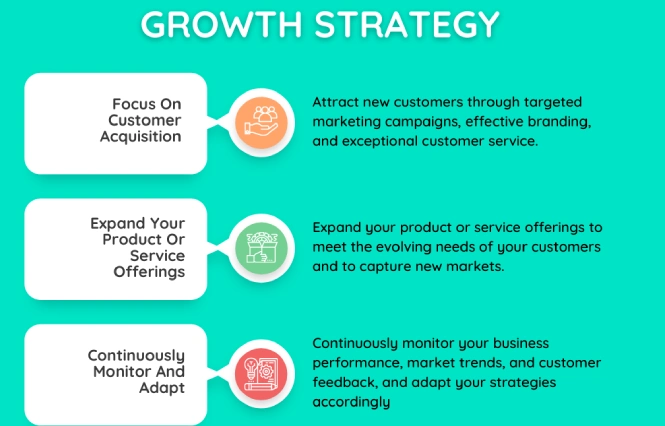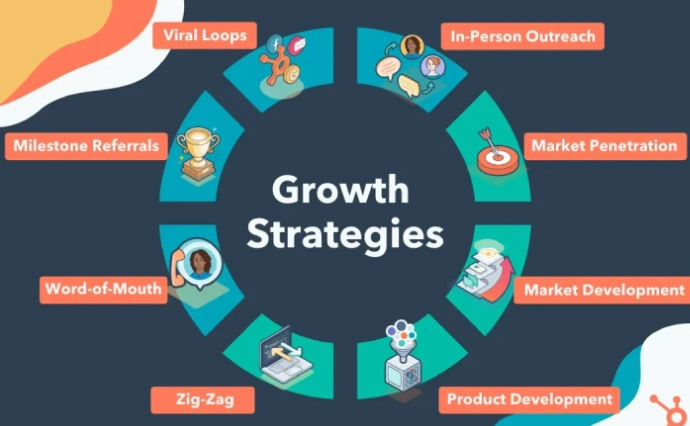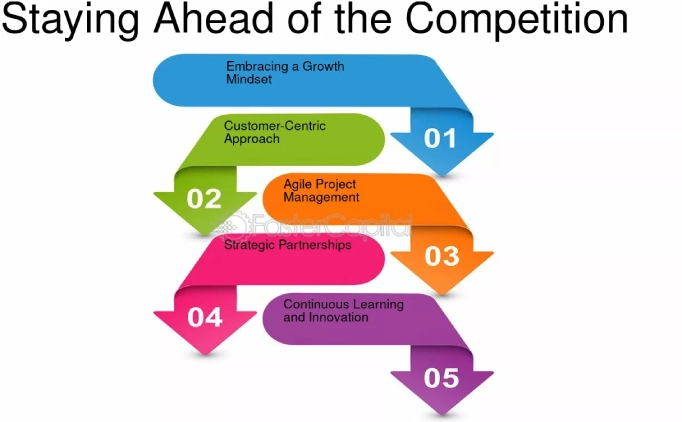What is Social Media Lead Generation?
Social media lead generation is the process of using social media platforms to find and attract potential customers, known as leads. A lead is someone who shows interest in your product or service. Companies use social media to connect with people, share content, and encourage them to take actions, like signing up for newsletters or filling out forms. This action helps businesses gather information to contact the lead later.
How Does Social Media Lead Generation Work?
Social media lead generation works by using social media platforms to engage with users. When users interact with a business’s content, such as clicking on an ad or responding to a post, the business can gather their contact information. This is usually done through forms where people provide their name, email, or phone number in exchange for something of value, like a free eBook, a discount, or exclusive access to a webinar.
Why is Social Media Lead Generation Important?
Social media lead generation is important because it helps businesses reach a wide audience. Many people spend a lot of time on social media platforms like Facebook, Instagram, and LinkedIn. By connecting with people on these platforms, companies can reach new customers and grow their business. Leads gathered through social media are often high quality because they have already shown interest in the company.
Benefits of Social Media Lead Generation
There are many benefits to using social media for lead generation. First, it helps businesses target specific audiences. Companies can use ads to reach people based on their interests, location, and age. Second, it builds trust with the audience. By sharing useful content and engaging with users, companies can form relationships with potential customers. Third, it is cost-effective. Businesses can create free posts or run affordable ads to attract leads.

Best Social Media Platforms for Lead Generation
Not all social media platforms are the same when it comes to social media lead generation. Some platforms work better than others, depending on the type of business and target audience.
Facebook for Lead Generation
Facebook is one of the best platforms for social media lead generation. It has over 2.8 billion users, making it a great place to find leads. Facebook allows businesses to run targeted ads and create forms to collect lead information directly within the platform.
LinkedIn for Lead Generation
LinkedIn is ideal for social media lead generation in the B2B (business, to, business) space. Professionals use LinkedIn to network, making it a great platform for connecting with decision, makers. LinkedIn also offers special tools for generating leads, such as lead forms and sponsored content.
Instagram for Lead Generation
Instagram is perfect for companies that rely on visuals to attract leads. With Instagram Stories, Reels, and posts, businesses can share engaging content and use features like links and CTAs (calls, to, action) to drive people to sign up or make purchases.
Why is Social Media Lead Generation Important?
Social media lead generation is important for businesses because it helps them find new customers. Today, many people spend a lot of time on social media platforms like Facebook, Instagram, and LinkedIn. This makes social media the perfect place to connect with potential customers. When companies use social media to generate leads, they can reach a wide range of people. These leads can later become paying customers.
Social Media Lead Generation Helps Reach a Large Audience
One of the best things about social media lead generation is that it allows businesses to reach a huge audience. For example, Facebook has billions of users. Companies can target specific groups of people based on their interests, age, or location. This helps businesses find the right audience for their product or service. By reaching more people, businesses have a better chance of getting more leads.
Social Media Lead Generation Builds Trust
Another reason why social media lead generation is important is that it helps businesses build trust. When companies share helpful and interesting content on social media, they can form connections with their audience. This makes people more likely to trust the brand. If people trust a company, they are more likely to become leads. By answering questions and responding to comments on social media, businesses can show that they care about their customers.
Social Media Lead Generation Is Cost-Effective
Using social media lead generation is also cost-effective. Many social media platforms allow businesses to create free accounts and share posts without any cost. Even if companies decide to pay for ads, the cost is usually lower compared to other types of advertising. This makes social media a great option for small businesses that want to find leads without spending too much money.
Social Media Lead Generation Increases Sales
When businesses use social media lead generation, they have a better chance of increasing sales. By collecting information from leads, businesses can contact them and offer special deals or discounts. This can lead to more people buying products or services. Social media helps companies stay connected with leads, which makes it easier to turn leads into customers.
Best Social Media Platforms for Social Media Lead Generation
Different social media platforms have unique features that help businesses with social media lead generation. Some platforms are better for finding leads depending on the type of business and target audience. Choosing the right platform can make a big difference in the success of lead generation efforts.
Facebook for Social Media Lead Generation
Facebook is one of the top platforms for social media lead generation. With over 2.8 billion users, it gives businesses access to a huge audience. One of Facebook’s strengths is its ability to target specific people. Businesses can create ads that show up only to people who match their desired audience, such as those in a certain location or age group.
Facebook also has a tool called Lead Ads, which helps collect contact information like names, emails, or phone numbers without users leaving the app. This makes the process easy and convenient for both the business and the potential lead.
Instagram for Social Media Lead Generation
Another excellent platform for social media lead generation, especially for businesses that rely on visuals. Instagram is known for its images and videos, which allow companies to show off their products in a creative way. Businesses can use Instagram Stories, posts, and Reels to engage with users.
One of Instagram’s key features for lead generation is the ability to add links in stories or profiles. Companies can direct users to a page where they can sign up for a newsletter, enter a contest, or make a purchase. This makes it easier for businesses to gather leads through visual content.
LinkedIn for Social Media Lead Generation
LinkedIn is a professional network, making it a great platform for B2B (business-to-business) social media lead generation. Many professionals and decision-makers use LinkedIn to connect with others in their industry. Companies can use LinkedIn to share valuable content, such as blog posts or industry news, and connect with potential leads.
LinkedIn also has a Lead Gen Form feature. This feature allows businesses to collect lead information directly from LinkedIn ads. Since the forms are pre-filled with users’ LinkedIn profile data, it is easy for them to submit their information, increasing the chances of getting leads.
Strategies for Effective Social Media Lead Generation
To succeed in social media lead generation, businesses need to use effective strategies. These strategies can help companies attract and convert potential customers. Here are some popular methods to generate leads through social media.
Create Engaging Content
One of the best ways to boost social media lead generation is to create engaging content. This means making posts that grab people’s attention. Businesses can share interesting articles, fun videos, or eye-catching images. By sharing useful and entertaining content, companies can encourage users to interact with their posts. This interaction can lead to more people showing interest in their products or services.
Use Clear Calls-to-Action
A call-to-action (CTA) tells people what to do next. Using clear CTAs in posts is very important for social media lead generation. For example, businesses can ask users to “Sign up for our newsletter” or “Click here to get a discount.” These CTAs guide potential leads to take the desired action. If users know what to do, they are more likely to engage with the business.
Run Contests and Giveaways
Running contests and giveaways is another fun way to boost social media lead generation. Businesses can encourage users to participate by offering a prize, such as a product or gift card. To enter, users might need to follow the business’s social media account, share the post, or tag friends. This not only helps collect leads but also increases brand awareness and engagement.
Measuring Success in Social Media Lead Generation
To know if your social media lead generation is working, you need to measure your success. One way to do this is by looking at how many leads you get from your posts or ads. Tracking clicks on links and sign-ups can help you see what works best.
Use Analytics Tools
Many social media platforms offer analytics tools that show you how your posts perform. These tools can help you understand what content gets the most attention. By using this information, you can improve your social media lead generation strategy and get even better results!
FAQs about Social Media Lead Generation
Q: What is social media lead generation?
Social media lead generation is the process of attracting potential customers through social media platforms.
Q: Why is social media important for lead generation?
Social media helps businesses reach a large audience and engage with potential customers effectively.
Q: What are some effective strategies for social media lead generation?
Some strategies include creating engaging content, using clear calls-to-action, and running contests or giveaways.
Q: Which social media platforms are best for lead generation?
Facebook, Instagram, and LinkedIn are popular platforms for effective social media lead generation.
Q: How do I create engaging content for lead generation?
You can create engaging content by sharing interesting articles, videos, and images that resonate with your audience.
Q: What is a call-to-action (CTA)?
A call-to-action (CTA) encourages users to take a specific action, like signing up for a newsletter or following a social media account.
Q: How can contests help with lead generation?
Contests can attract users to engage with your brand and provide their information in exchange for a chance to win a prize.
Conclusion
In summary, social media lead generation is a powerful way for businesses to find potential customers. By using platforms like Facebook, LinkedIn, and Instagram, companies can engage with users, build trust, and collect valuable information. Social media lead generation helps businesses grow by reaching a wider audience, targeting specific groups, and forming lasting relationships with leads.
Choosing the right platform is crucial for successful social media lead generation. Facebook, Instagram, and LinkedIn are some of the best platforms to use, depending on your business and audience. Each platform offers unique tools to help businesses find and connect with potential leads.


















